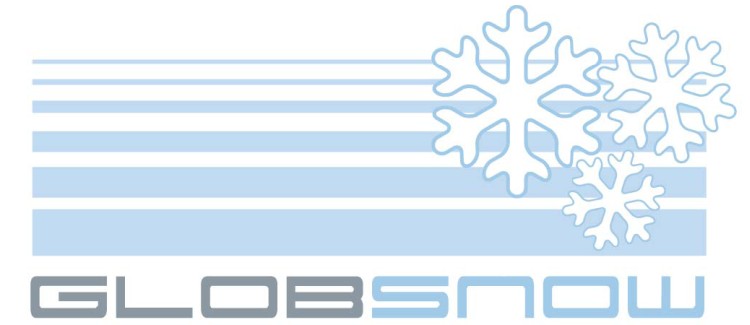
|
 |
|
|||||||||||||||||||
About Links Project consortium |
 |
GlobSnow v3.0 NH SWE data has been released!The GlobSnow v3.0 NH SWE data is available via: GlobSnow-2 Final Report released
The ESA DUE GlobSnow-2 project is coming to an end. The GlobSnow-2 Final Report and the final Newsletter give an overview of the activities and accomplishments from the project.
GlobSnow SWE & SE v2.0 data released
The ESA DUE GlobSnow-2 project has released Version 2.0 SE and SWE datasets for the Northern hemisphere, intended for climate research purposes.
Direct data access: Snow Extent and Snow Water Equivalent.
GlobSnow consortium participated drafting a white paper: "Perspectives for a European Satellite-based Snow Monitoring Strategy"This white paper offers an overview on the status and gaps of satellite-based snow monitoring from research to services. Currently it gives a first consolidated overview of gaps, requirements and recommendations, elaborated within the ESA DUE GlobSnow-2 project, in collaboration with service providers and experts from various agencies, institutions, and projects; focusing on European domain and perspectives." GlobSnow OverviewThe aim of the ESA DUE GlobSnow project is the production of global long term records of snow parameters intended for climate research purposes on hemispherical scale.
IntroductionThe European Space Agency (ESA) funded GlobSnow-1 project was active from 2008 to 2012. The currently on-going GlobSnow-2 project is a direct continuation of the GlobSnow-1 and will continue through May 2014. GlobSnow-1 resulted in two long-term datasets at the hemispherical scale. Information on two essential snow parameters: snow water equivalent (SWE) and areal snow extent (SE), were provided for a period of 33 years and 17 years respectively. The Final report of GlobSnow-1 gives additional information on the accomplishments and recommendations from GlobSnow-1 project. The GlobSnow snow datasets contain satellite-retrieved information on snow extent (SE featuring Fractional Snow Cover, FSC) and snow water equivalent (SWE) extending as far to the past as feasible using the selected sensor-families. The current SE dataset is based on optical data from Envisat AATSR and ERS-2 ATSR-2 sensors covering the Northern Hemisphere between 1995 to 2012. The SWE record is based on the time series of measurements by two different space-borne passive microwave sensors (SMMR and SSM/I) spanning 1979 to 2012. The SWE product combines satellite-based passive microwave measurements with groundbased weather station data in a data assimilation scheme. Both products are provided on a daily, weekly and monthly basis in NetCDF CF format accompanied with quicklook images for each product. In addition to the long term series of SE and SWE, an operational near-real time (NRT) snow information service is maintained. The NRT service initiated operations on October 2010. Both the historical datasets and the NRT products are available for the GlobSnow user community through this website. The objective of the GlobSnow-2 project is further enhancement of the retrieval methodologies for SE and SWE products and a re-processing of the long term datasets utilizing the improved retrieval algorithms. In addition to the further development of methodologies for the legacy sensor families of GlobSnow-1, the consortium will investigate the utilization of AVHRR and NPP Suomi VIIRS data as gap fillers before the launch of the Sentinel-3 SLSTR-sensor. Also the development of a new product combining the high resolution SE data with the lower resolution SWE product will be an area of focus for GlobSnow-2. The project is being coordinated by the Finnish Meteorological Institute (FMI). Other project partners involved are NR (Norwegian Computing Centre), ENVEO IT GmbH, GAMMA Remote Sensing AG, Finnish Environment Institute (SYKE), Environment Canada (EC), Northern Research Institute (Norut), University of Bern, Meteoswiss and ZAMG. Detailed presentations of the snow products and the snow service are found on their respective pages: SE, SWE,
For more information: |
 |
 |
 |
 |
 |
|||
|
|
 |
 |
| © Finnish Meteorological Institute |